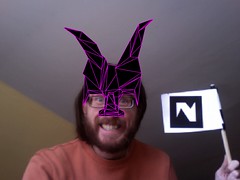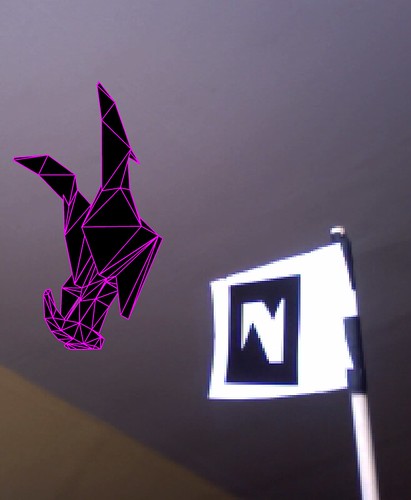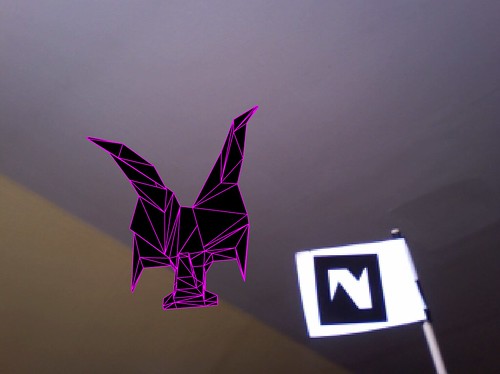Following on the success of a previous augmented reality project, I created a digital mask for curator Deidre Healy‘s Dark Arts in Burlington, VT.

This new piece, Mask, was based on the idea of those French-style masks with a rod that you hold over your face. I created a simple grotesque 3D model in Blender and then made use of the FLARManager and FLARToolkit frameworks in conjunction with Papervision3D.
In practice, observing gallery goers interact with the piece, I don’t think the side placement really worked. Perhaps if I had made the glyph so that it looked like a rod-style mask it would work. More research necessary.
It is true that they can be incredibly gimmicky, but that’s sort of the nature of all new technologies. Could be that, as Seb Lee-Delisle recently remarked “Augmented reality is 2009’s page turn effect.” But I wonder what folks said about television, radio and early computer art. Someone’s got to play with this stuff. Guess it’ll be me. 🙂
The more I work on these AR (augmented reality) pieces the more ideas I get about using them. Not just in a commercial sense (AR greeting cards etc etc etc). But in a narrative sense. As I explained to a gentleman from NY who came to the Dark Arts opening, at the basic level, AR is just a simple gateway for data exchange. If you have possession of the AR glyph, then the system can reveal data to you. Or, in the case of GPS-based systems, if you are in a specific location then the system can reveal data to you. I think there’s some fun possibility for narrative in there somewhere. Or maybe I’ve read Gibson’s “Spook Country” too many times.
Here are a few more photos of the augmented reality “Mask” created for the Dark Arts gallery show.


